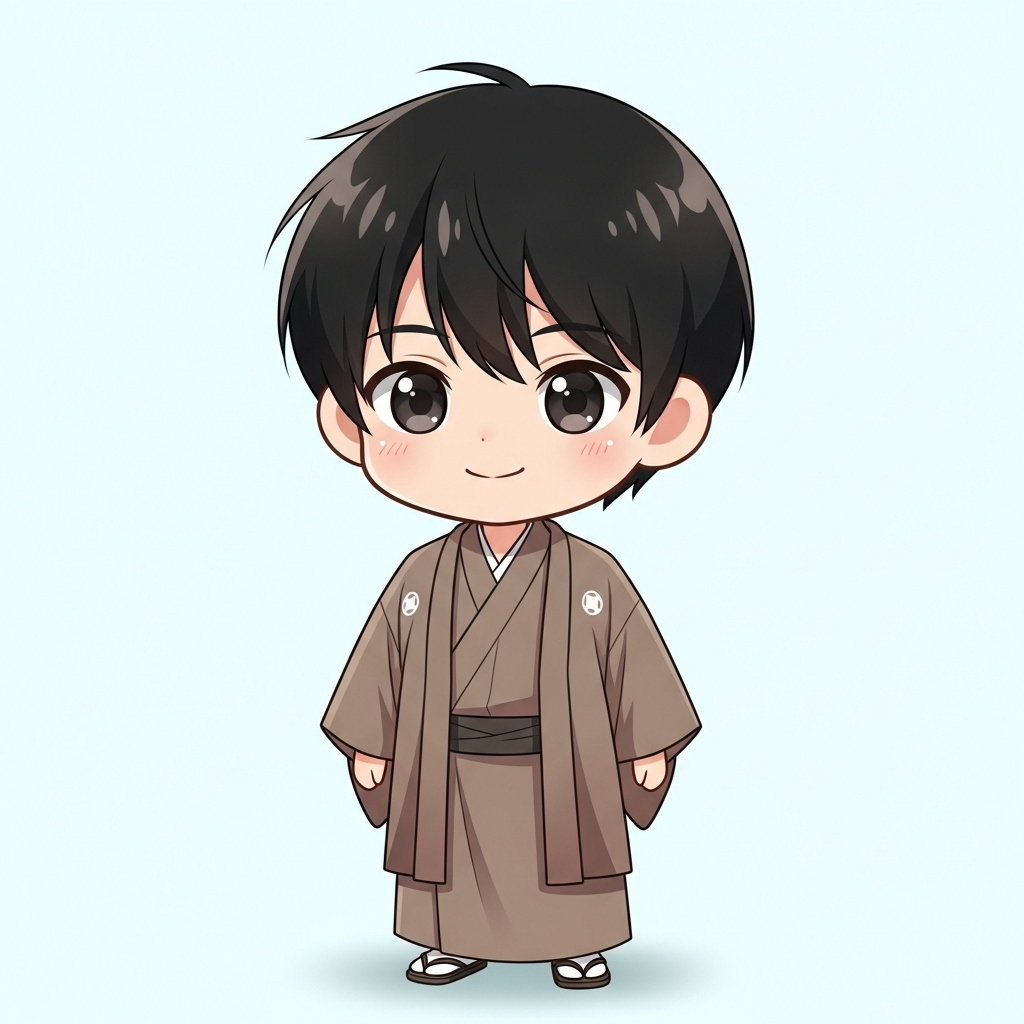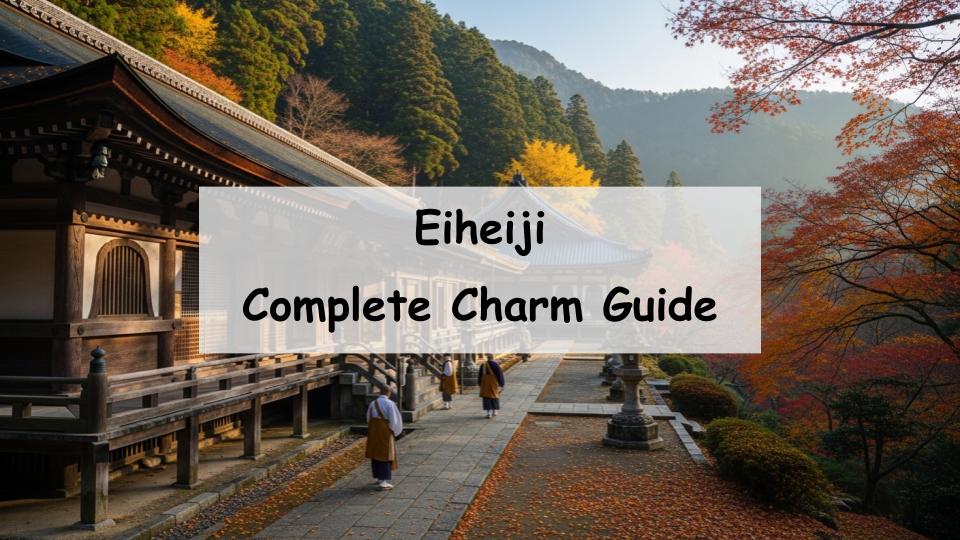Have you ever wondered, “What kind of temple is Eiheiji?” or “Is it worth visiting as a tourist?” If so, you’re not alone.
Located in Fukui Prefecture, Eiheiji Temple is the head temple of the Soto school of Zen Buddhism, founded by the monk Dogen. This sacred site is renowned for its serene atmosphere, stunning natural surroundings, and the opportunity to witness traditional monastic life.
In this article, we’ll explore Eiheiji’s rich history, its unique appeal, must-see highlights, access information, and surrounding attractions. By the end, you’ll understand why Eiheiji is a destination worth adding to your travel list.
- What is Eiheiji? History and Essential Facts
- Why Eiheiji is Special: Key Attractions and Unique Features
- Must-See Highlights in Eiheiji
- How to Get to Eiheiji: Transportation Guide
- Important Tips Before Visiting Eiheiji
- Beyond Eiheiji: Where to Stay and What to Do Nearby
- Conclusion: Eiheiji is a Journey for the Heart and Mind
- A Message from the Guide
What is Eiheiji? History and Essential Facts
The Founding and Historical Background of Eiheiji
Eiheiji was established in 1244 by Dogen, a Buddhist monk who introduced Soto Zen to Japan after training in China. He created Eiheiji as a place to practice “shikantaza”—a form of meditation focused solely on sitting. From its inception, the temple has served as a training ground for Zen monks, remaining central to the spiritual tradition of Soto Zen.
Connection to the Soto School of Zen Buddhism
As one of the two head temples of the Soto school, Eiheiji plays a pivotal role in the sect’s spiritual and organizational life. Soto Zen emphasizes direct experience through seated meditation (zazen), and Eiheiji embodies this through daily monastic routines, which visitors can often witness. The temple is both a sacred space and a symbol of discipline, humility, and enlightenment.
Essential Information (Location, Hours, Admission)
Eiheiji is located in the town of Eiheiji in Yoshida District, Fukui Prefecture. It is open to visitors from 8:30 AM to 4:30 PM. The general admission fee is ¥700 for adults. Visitors follow a designated route through the temple complex, and there are clear guidelines regarding behavior and photography. It’s recommended to check the official website before your visit for the most up-to-date information.
Why Eiheiji is Special: Key Attractions and Unique Features
A Sacred Space Immersed in Silence and Zen Atmosphere
One of Eiheiji’s most striking qualities is its stillness. The quiet, spiritual ambiance instantly separates you from the noise of everyday life, creating a space for reflection and peace. The moment you step inside, you are enveloped in the world of Zen.
A Glimpse into the Life of Zen Monks
Eiheiji is an active monastery where you can observe monks in training. Their disciplined daily routines—cleaning, chanting, walking in silence—offer a rare insight into a life dedicated to spiritual practice. Witnessing their commitment can be both humbling and inspiring.
Architectural Beauty Harmonized with Nature
The temple complex features traditional wooden buildings connected by long corridors that integrate naturally with the surrounding forest. The combination of architecture and nature reflects the Zen philosophy of harmony.
Seasonal Beauty Throughout the Year
Each season offers a new perspective on Eiheiji’s beauty. In spring, vibrant greens emerge; summer brings lush foliage and cool breezes; autumn sets the grounds ablaze with reds and golds; and winter blankets the temple in peaceful snow. No matter when you visit, Eiheiji reveals a different, equally breathtaking face.
Must-See Highlights in Eiheiji
Main Structures like the Sanmon Gate and Butsuden Hall
The Sanmon Gate welcomes visitors into the temple’s serene world. Inside, key buildings like the Hatto (Dharma Hall) and Butsuden (Main Hall) form the core of religious activity. Each structure carries historical significance and spiritual symbolism.
The Shichidō Garan: Seven Sacred Structures
The Shichidō Garan refers to the seven principal buildings essential to a Zen monastery. Eiheiji includes all seven, including the monks’ hall (Sōdō) and the bathhouse (Yokushitsu). These facilities are crucial for training and ritual, and together they represent the spiritual heart of the temple.
Popular Experiences for Visitors
Visitors can participate in various hands-on experiences designed to convey Zen principles and monastic discipline.
What to Expect in a Zazen Meditation Session
Zazen sessions are guided by trained monks and are accessible to beginners. Participants learn how to sit and breathe properly, entering a state of focused mindfulness. Silence and stillness are essential, and electronic devices must be turned off during the session.
Tasting the Art of Shojin Ryori (Zen Vegetarian Cuisine)
Shojin ryori is a plant-based meal served at Eiheiji that reflects Zen principles. Each dish is carefully prepared to highlight the ingredients’ natural flavors. It’s not just a meal—it’s a meditation in itself.
How to Get to Eiheiji: Transportation Guide
By Train, Bus, or Car
You can reach Eiheiji by public transport or car. From JR Fukui Station, transfer to the Echizen Railway and get off at Eiheiji-guchi Station. From there, a local bus takes you to the temple. If you’re driving, Eiheiji is about a 20-minute ride from Fukui Kita IC on the Hokuriku Expressway.
From Fukui Station: Route and Time
From Fukui Station, the journey takes approximately 45 minutes by train and bus. If you prefer a taxi, the ride takes about 30 minutes. Scenic views along the way enhance the journey.
Combine Your Visit with Nearby Attractions
While in the area, consider visiting other local spots like Tojinbo Cliffs or the Ichijodani Asakura Ruins. Eiheiji pairs perfectly with a full-day itinerary that includes history, nature, and spirituality.
Important Tips Before Visiting Eiheiji
Etiquette and Dress Code
As a functioning monastery, Eiheiji requires respectful behavior. Visitors should dress modestly and remain quiet inside the temple grounds. Proper etiquette ensures a peaceful experience for everyone.
Photography Rules and Considerations
Photography is restricted in certain areas, especially where monks are present. Always observe posted signs and avoid taking pictures without permission.
Best Seasons and How to Avoid Crowds
Spring and autumn are peak seasons, attracting many tourists. For a quieter experience, try visiting on weekday mornings. Winter also offers a unique charm with its snow-covered scenery and tranquil air.
Beyond Eiheiji: Where to Stay and What to Do Nearby
Recommended Accommodations and Hot Springs
There are several ryokans and hot spring inns near Eiheiji where you can relax after your temple visit. Spending a night in the area allows you to fully immerse yourself in the temple’s peaceful atmosphere.
Local Food and Souvenirs
Beyond temple cuisine, Fukui is known for local specialties like soba noodles and sesame tofu. The temple town area has souvenir shops where you can find Zen-inspired items and local delicacies.
Travel Tips for Families, Solo Travelers, and Seniors
Eiheiji caters to all kinds of travelers. Families can enjoy the natural surroundings, solo travelers may find introspective peace, and seniors can explore the site at a leisurely pace. The facilities are designed to be accessible and informative.
Conclusion: Eiheiji is a Journey for the Heart and Mind
The Spiritual and Personal Value of Visiting Eiheiji
A visit to Eiheiji offers more than sightseeing—it provides an opportunity to reconnect with yourself. The silence, rituals, and natural beauty all work together to inspire mindfulness and inner calm.
Why Even First-Time Visitors Will Feel Welcome
Thanks to its well-organized layout and accessible programs, Eiheiji is welcoming to newcomers. You don’t need prior knowledge of Zen to appreciate its power. All you need is an open mind—and perhaps a little curiosity.
A Message from the Guide

Visiting this place naturally fills you with energy and a renewed zest for life.








Comment